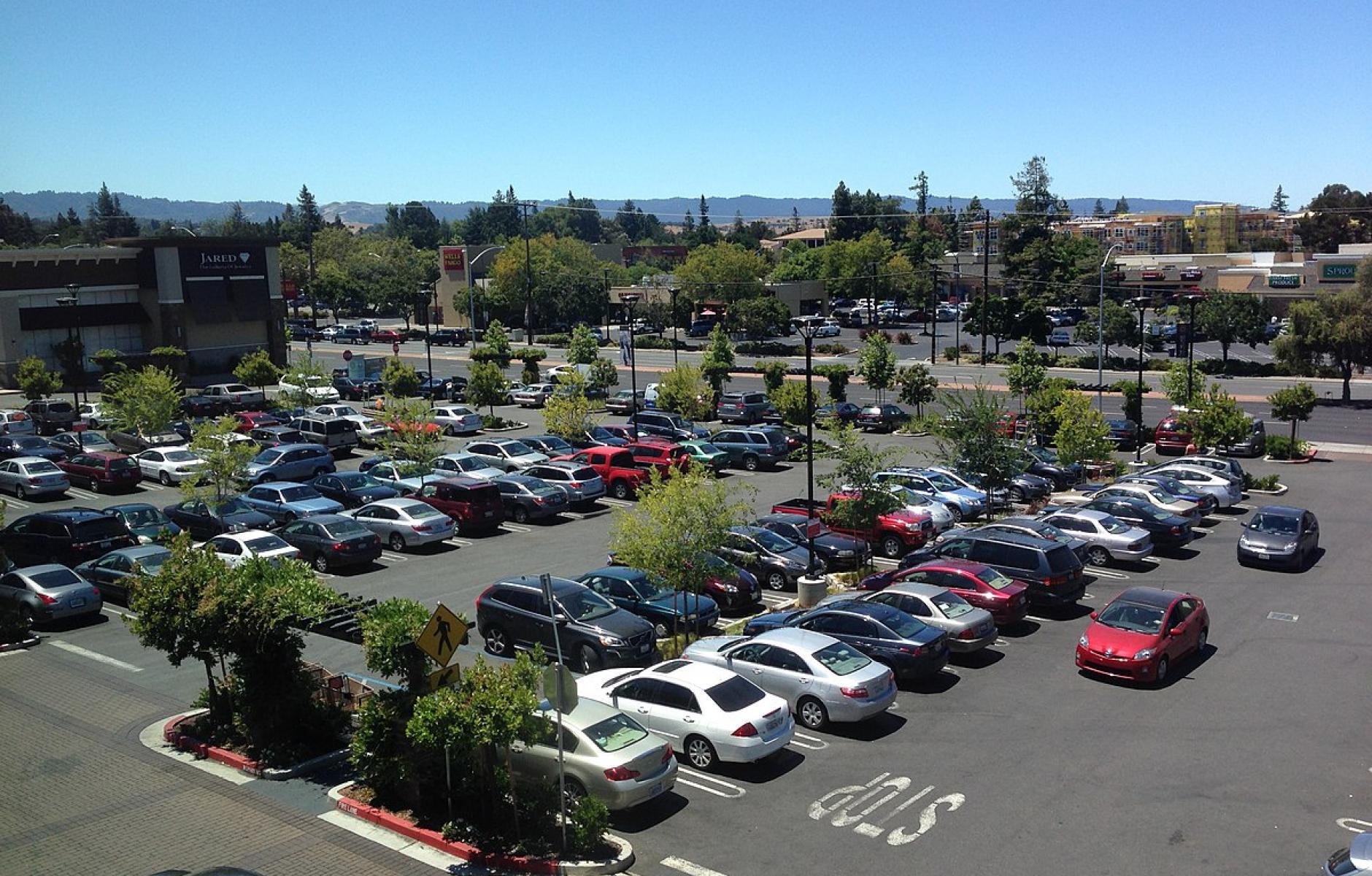
To save carbon, cut out the parking lot
Imagine a city where nearly half of the land is covered in concrete, used for nothing more than parking cars. This is the reality in Arlington, Texas, where parking lots and garages occupy 42 percent of the city's land area. Dallas is not far behind, with a quarter of its downtown core dedicated to parking. Parking policy is the secret killer of our planet and our way of life. Parking minimums contribute to climate change, as developers must build a certain number of parking spaces for every new building. This leads to a car-centric future, as owning a car is cheaper and easier when plenty of parking is available. Reducing parking minimums will dramatically reduce CO2 emissions by reducing demand for individual car ownership, encouraging public transportation use, increasing density, and reducing travel time.
Individual car ownership is a convenient but carbon-intensive mode of transportation. A typical passenger vehicle emits about 4.6 metric tons1 of carbon dioxide annually, contributing to climate change and other environmental problems. Since over 90 percent of American households have a car2, the impact of Individual car ownership on the climate is significant. This is only enabled by induced demand created by massive parking lots that many municipalities require businesses and developers to have around their buildings. Large parking lots and parking minimums generate demand for cars and driving because they make parking cheaper and easier, encouraging people to drive more.
Additionally, parking minimums require developers to build more parking than is usually necessary, further incentivizing car ownership and use. Theoretically, if we remove these parking lots to reduce individual car ownership, a few problems would arise. Cars would no longer required to be individually owned since there is nowhere to park them. And, how will people get from place to place without a car and parking? The solution is simpler than it seems. There are two options for the fate of the vehicles: business-to-consumer (B2C) and peer-to-peer (P2P) car sharing. Research shows3 that these two methods of shared car ownership can reduce individual carbon footprints by 40 percent. The shift from individual ownership to shared is also not a difficult one. Public and private institutions can be set up to organize the new system of ownership for these vehicles and can handle the logistics of transporting people using these vehicles. Car sharing is a feasible solution to reduce individual car ownership and carbon footprint and deal with the fallout from removing parking minimums.
Now imagine a city without sprawling parking lots, where people can easily get around on public transit, bike, or walk instead of cars. Since buildings will not have sprawling parking lots and a sea of concrete surrounding them, the distance between public transit infrastructure and the facilities where people live and work will be reduced. Research shows4 that when the distance between the two is reduced, travelers are more likely to use public transit. Reducing parking minimums can create more walkable and transit-friendly cities, with shorter distances between public transit and buildings. Reducing parking minimums can help reduce emissions by making it more convenient for people to choose sustainable transportation options, such as public transit, biking, and walking. This can significantly reduce vehicle emissions, improve air quality, and create more livable and sustainable communities.
I have observed that large parking minimums can make trips unnecessarily long. For example, I once visited a suburban office building with a large parking lot. It took me 10 minutes to walk from my car to the entrance of the building, even though the parking lot was not very full. This is because the zoning regulations for the area required the developer to build a certain number of parking spaces, even though the building did not need them. This type of situation can be frustrating for visitors and tenants alike. It can also lead to increased traffic congestion and air pollution. Another way parking lots waste time for visitors and tenants alike is the time needed to search for a parking spot. Research indicates5 that motorists can spend 17 hours a year looking for parking spaces. This time could be used for working, shopping, and contributing to the economy. This is a hidden cost of parking minimums we can no longer afford. The same research indicates an average of $345 wasted on time, fuel, and emissions.
Building on the economic impact of parking minimums, the seas of concrete are also simply wasted space. Let us analyze the parking lot of a superstore in Garland, Texas, a suburb of Dallas. According to the Dallas County Appraisal District, the supermarket's parcel is 20.2 acres or 880,870 square feet. The actual building only takes up 4.9 acres, or 213,495 (about twice the size of a city block). Over 70 percent of the parcel is used up by cars. All those cars must travel there and leave, which causes emissions. By replacing the unused space with buildings, people are more likely to walk and not use a vehicle, thus lowering emissions caused by transport.
Removing parking minimums can occur immediately, and the community will see improvement. Developers will use the space to create more facilities, and people will begin to walk instead of using CO2-emitting cars.
Editor's note: This article addresses CNU’s Strategic Plan goal of advancing design strategies that help communities adapt to climate change and mitigate its future impact.
1 Sheryll Gonzales, 8billiontrees.com, How Much CO2 Does a Car Emit per Mile: List by Type, Size, Energy Source
2 Ashlee Tilford, Forbes Advisor, How Many Vehicles Are There in the U.S.?
3 Ana María Arbeláez Vélez, Sustainable Production and Consumption, Economic impacts, carbon footprint and rebound effects of car sharing: Scenario analysis assessing business-to-consumer and peer-to-peer car sharing
4 Chris De Gruyter et al, Journal of Transport Geography, Can high quality public transport support reduced car parking requirements for new residential apartments?
5 Kevin McCoy, USA Today, Drivers spend an average of 17 hours a year searching for parking spots




